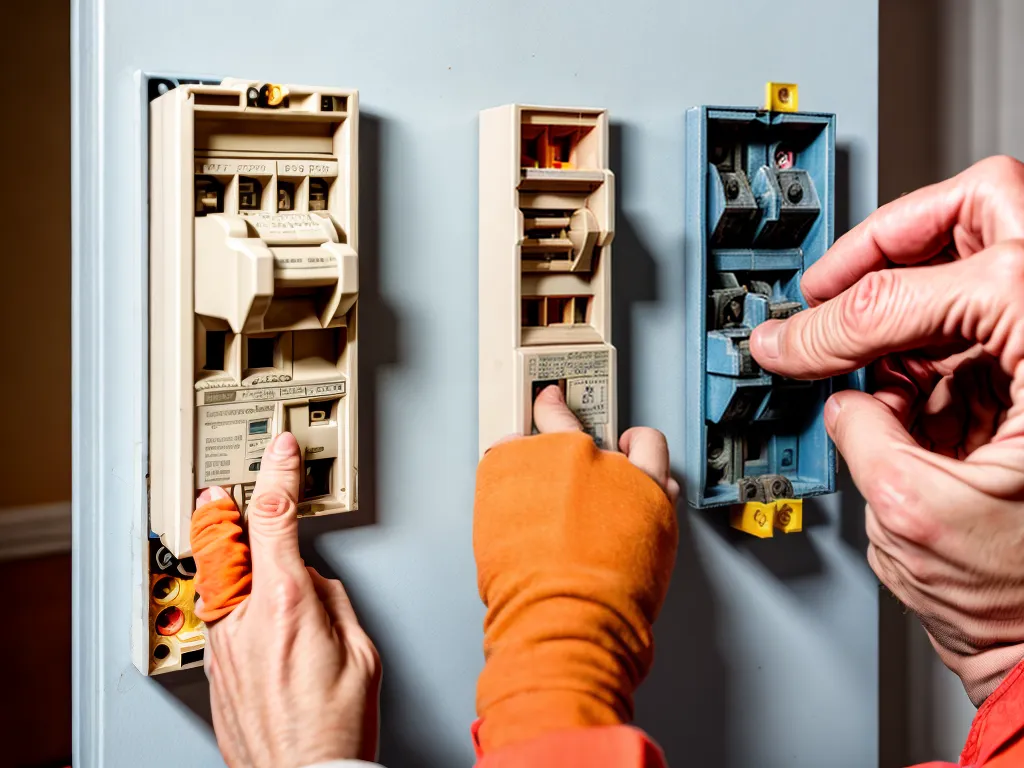
How to Troubleshoot Unlabeled Circuit Breakers in Older Homes
Introduction
Older homes often have circuit breakers that are not properly labeled. This can make it very difficult to know which breaker controls which parts of the house when issues arise. Troubleshooting unlabeled circuit breakers takes some time and effort, but it is doable with the right approach. In this guide, I will walk through the step-by-step process I use to identify unlabeled circuit breakers in older homes.
Gather Tools and Materials
Before getting started, make sure you have the proper tools and materials on hand:
-
Voltage tester - This device lets you see if a circuit is live without having to flip breakers on and off.
-
Plug-in light - A simple plug-in lamp or string of lights works well.
-
Extension cord - Used to plug in the test light in various outlets.
-
Notepad and pen - For labeling breakers as you identify them.
-
Breaker lockout - This locks a breaker in the off position for safety.
-
Camera - Helpful for photographing the breaker panel before and after labeling.
Turn Off Non-Essential Loads
Before you start flipping breakers, it's a good idea to turn off all non-essential loads on the circuits. This includes things like:
- Lights and lamps
- Televisions and stereos
- Appliances like the refrigerator, washer/dryer, etc.
This will minimize the chance of overloading a circuit as you troubleshoot. Only leave essential items like fridges, freezers, and aquariums running.
Flip Each Breaker Off One at a Time
Now comes the fun part - flipping breakers off one by one.
Start at the top left breaker in the panel. Flip it fully to the off position.
Then, walk through the home room by room checking for power outages. Make notes on which rooms lost power when you flipped each breaker off.
Once you've checked the whole home, flip that breaker back on and move to the next one. Repeat the process for each breaker in the panel.
Plug In Test Light
For many circuits, simply turning off breakers and checking for outages is sufficient to identify what each one controls.
However, some circuits may not have any obvious loads on them at the moment. This is where the test light comes in handy.
Plug the test light into various outlets in each room before flipping breakers off. When you flip the correct breaker, the test light will lose power, indicating you've found the right circuit.
Label the Breakers
As you identify each circuit, use the notepad to label the breakers clearly. Write what each breaker controls directly on the breaker panel.
Some tips for labeling:
- Use short, simple labels like "Living Room" or "Bathroom Lights"
- Make labels large and legible
- Use all caps for easier reading
- Double check labels for accuracy before moving on
Verify the Labels
Once you've labeled all the breakers, it's important to verify your work.
Flip each breaker off one more time and check that the expected devices and lights lost power. This catches any errors made while labeling.
Also walk through and visually verify that the circuits turned off match your labels for each breaker.
Take Photos
Finally, take clear photos of the completed breaker panel labeling. This provides a handy visual reference in case any labels get smudged or torn over time.
Also keep copies of the photos in your records in case you need to troubleshoot again in the future.
Summary
Troubleshooting unlabeled breakers takes time but is totally doable. With the right tools, systematic process, and careful labeling, you can identify those mysterious breakers in any older home. Just remember to work safely, double check your work, and take photos when finished. Following this process removes the frustration and makes fixing circuit issues a breeze.